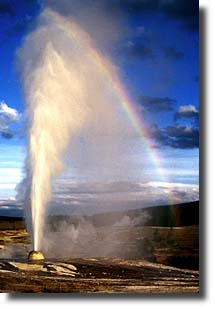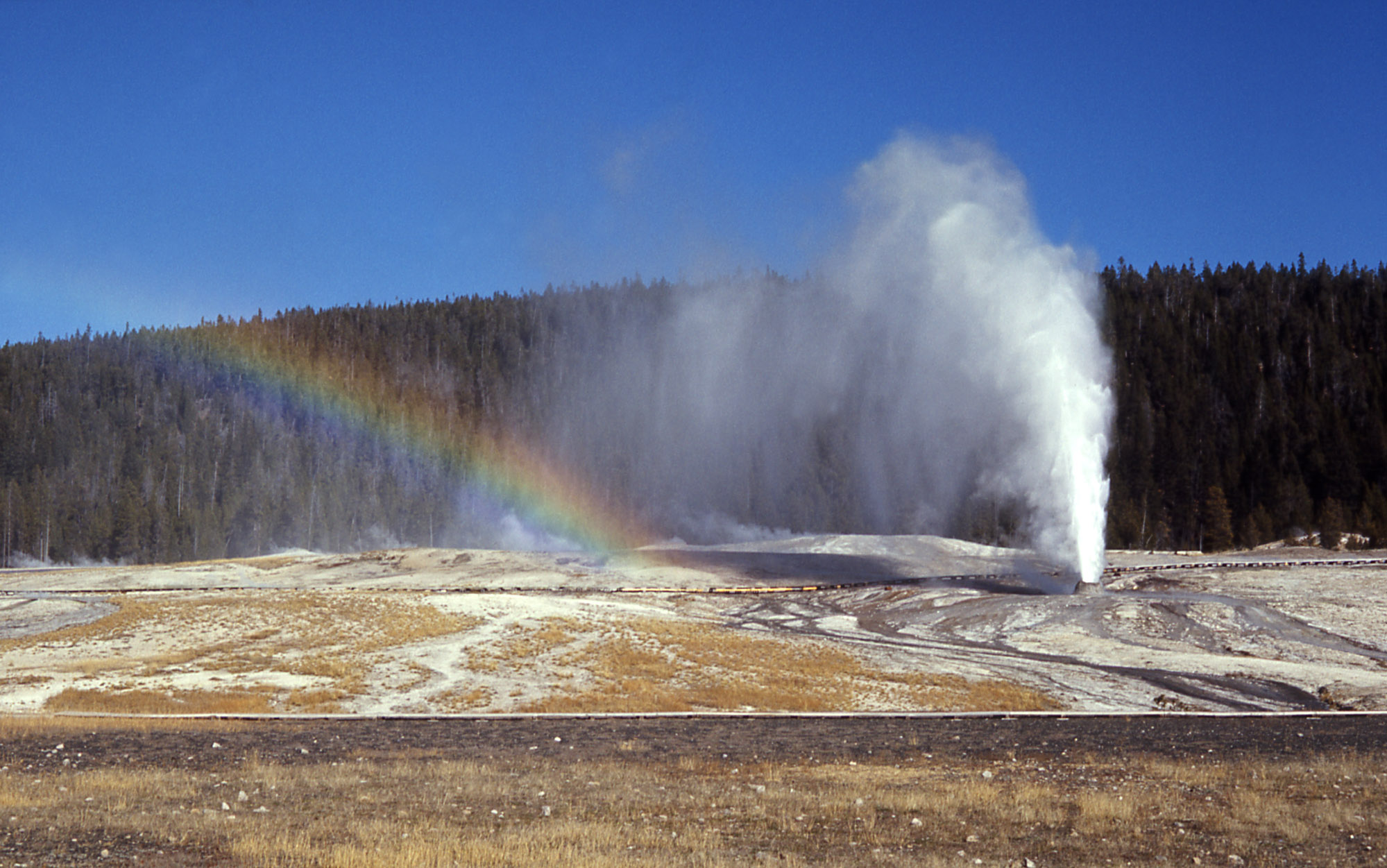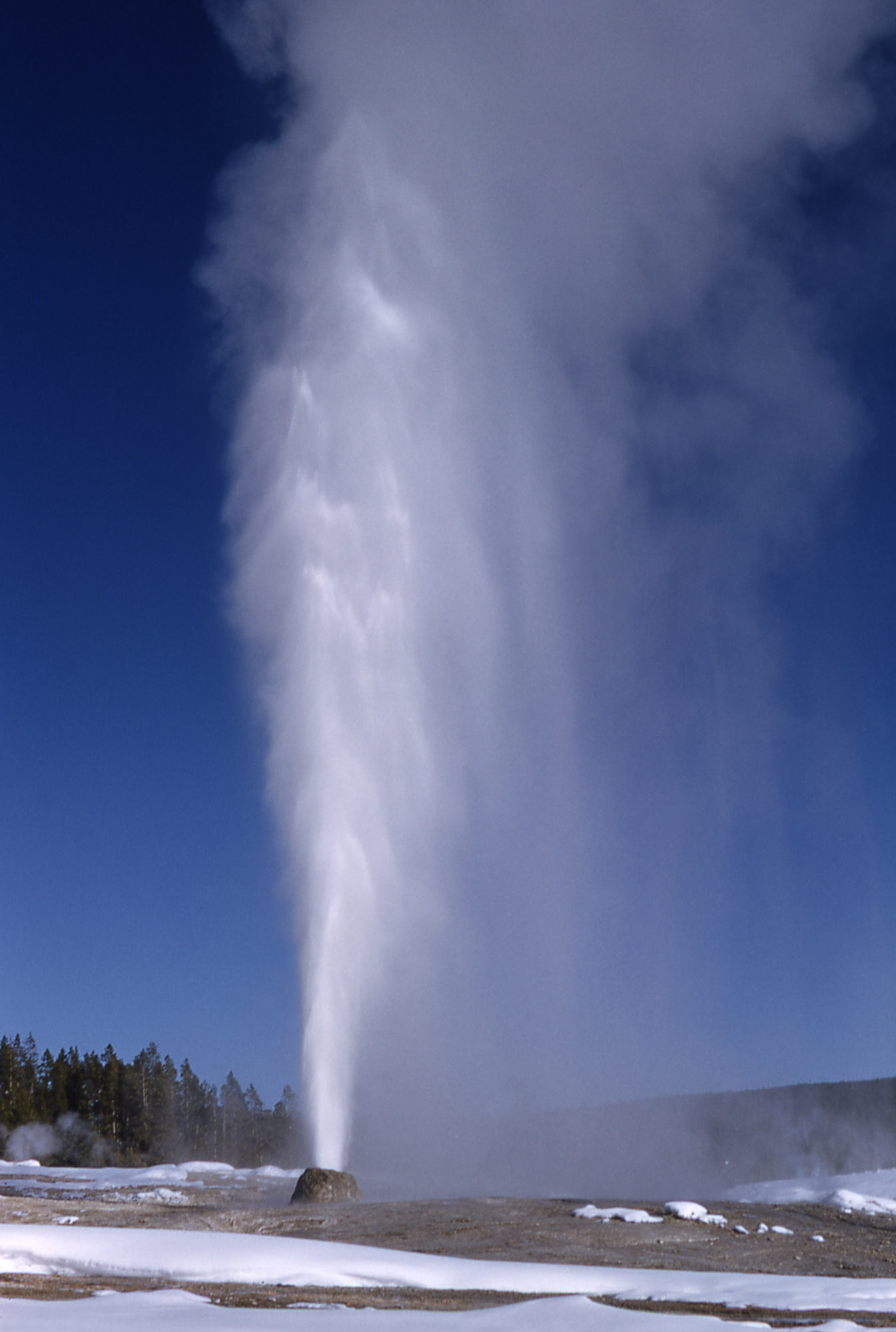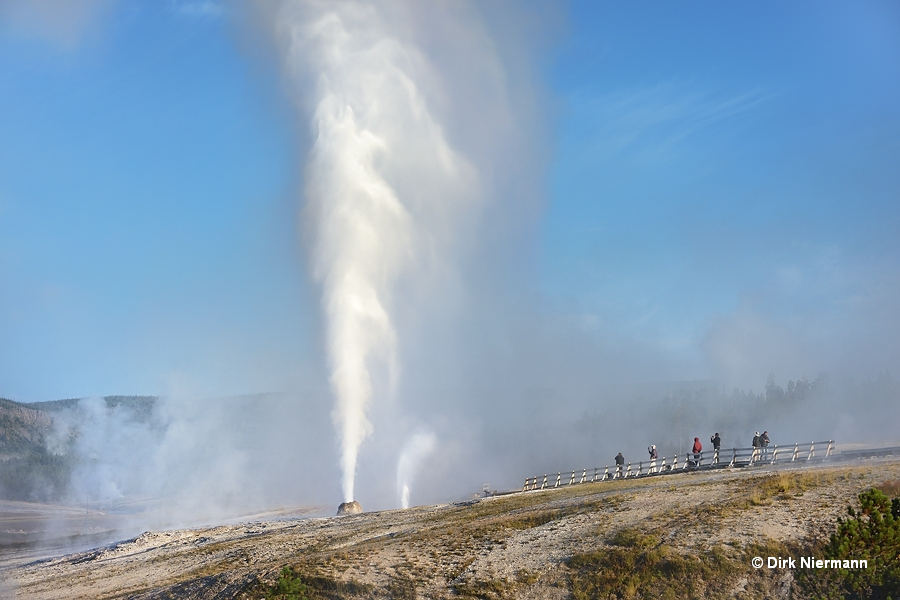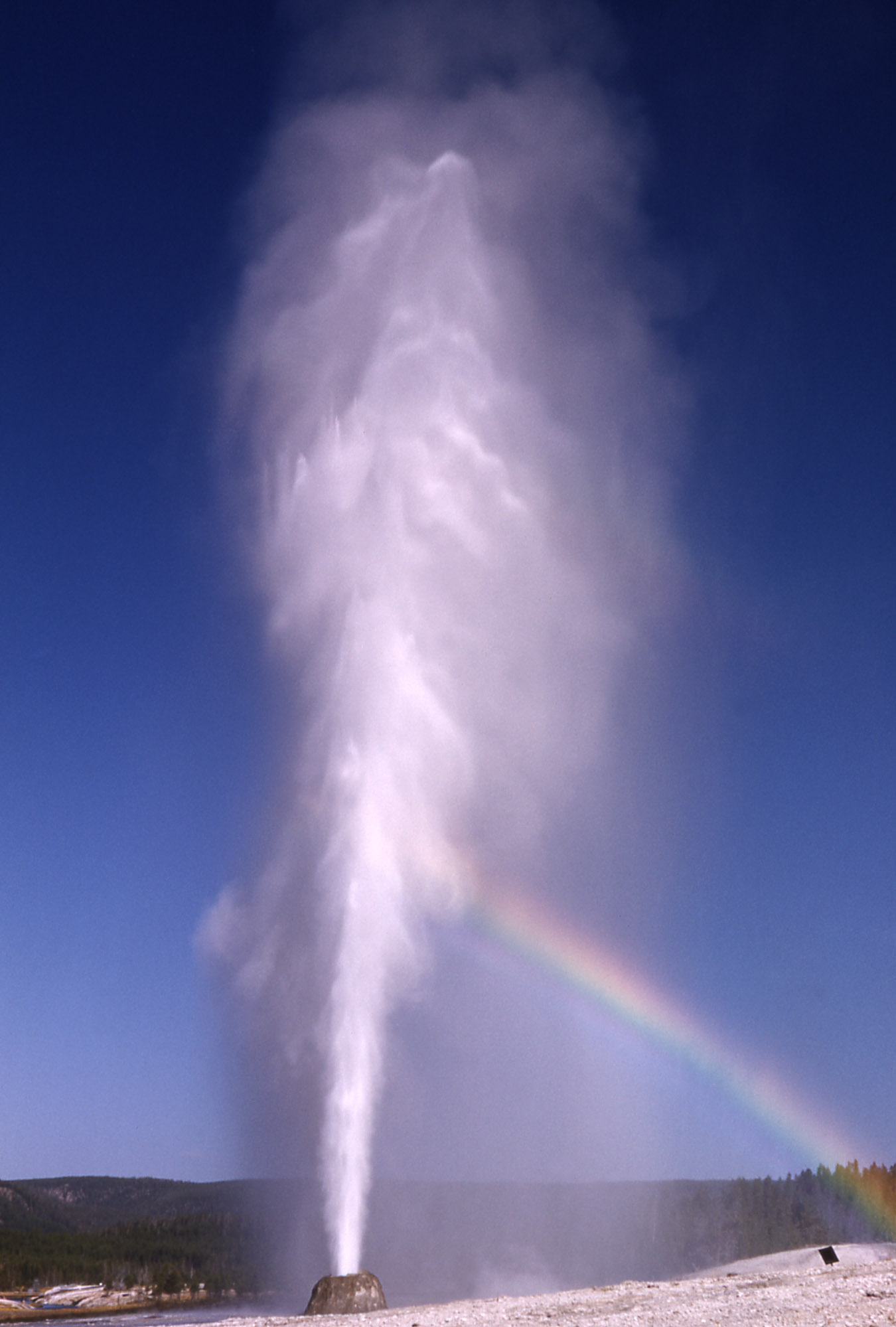Beehive Geyser
Beehive Geyser is a geyser in the Upper Geyser Basin of Yellowstone National Park in the United States.
Beehive belongs to the nozzle-like geysers. Beehive is the English term for hive. The geyser was named in 1870 by the Washburn - Langford - Doane Expedition. The 1.2 m high failure cone reminded the participants of the expedition to a hive. In about 3 meters from the Beehive is another small jagged jet type geyser is in connection with the Beehive, Beehive 's Indicator.
Beehive and Beehive 's Indicator can be observed via the Internet from the video webcam at Old Faithful.
Eruptions
The eruptions of Beehive Geyser takes approximately five minutes, the throw height is about 60 meters. The fountain reserves during almost the entire eruption at its height, it breaks only towards the end of the eruption lightly. It consists of a very fine spray of steam and water is ejected perpendicularly. A thundering steaming phase completes the eruption. It can be heard at the distance of about half a kilometer. The interval between the bursts (IBE ) is 8 to 24 hours in the summer. Outbreaks in the winter are very irregular. There are both in summer and winter series of eruptions, including the geyser behaves very regularly. At these times, the IBE is approximately 10 to 20 hours, the interval is extended towards the end of this series.
The neighboring Beehive 's Indicator has a throw height of 4.5 to 7.6 m. He breaks a few seconds to 30 minutes, but usually 15 to 20 minutes before the main eruption of Beehive Geyser. When the Beehive Geyser erupts, set the indicator for a while his outburst continued, and stops during the eruption of Beehive Geyser. Beehive announces his outbursts by a " prelude " to, that is, before the main eruption some short Voreruptionen take place.
In the 1990s Beehive was for three years as inactive. During this time, the indicator over time broke out up to 60 minutes and no eruption of Beehive followed the outbreak of the indicators.




